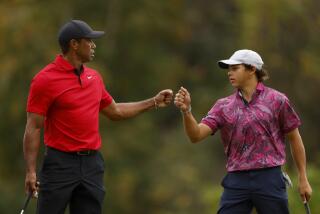They are the Nadal and Djokovic of their game, but that game is tiddlywinks
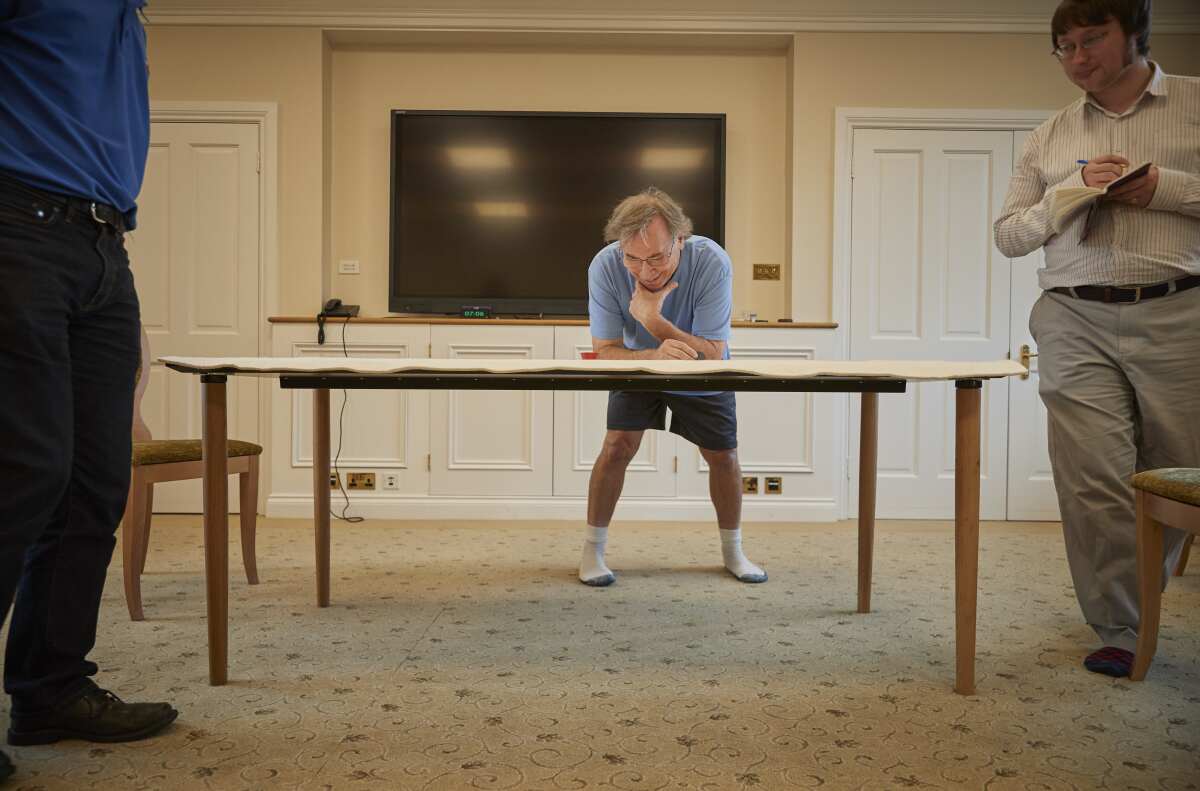
Larry Kahn took off his white New Balance sneakers, unzipped his fly and pulled off his jeans.
He got hot playing in too many clothes.
The striptease revealed muscular calf muscles beneath a pair of basketball shorts. Kahn was ready for action, ready to compete for his 44th world title.
He’d flown over from Washington, D.C., on economy. Nobody asked for an autograph or to pose for a selfie. Kahn’s privacy hasn’t been invaded by being the most successful tiddlywinks player of all time.
“You get into this game knowing it’s not a popular one,” he said.
Kahn, 65, is a retired IT engineer from Vienna, Va. As a teenager he enjoyed playing bridge and Frisbee. It wasn’t until 1971, in the pages of the freshman handbook for MIT, where he would later study, that he discovered tiddlywinks.
His first world title came in 1978, when he arrived to play in Southampton, England, still jet-lagged, to claim the world pairs’ crown.
With more than 50 trips over the pond under his belt since, Kahn has long stopped schlepping trophies home. His shelves are overcrowded as it is.
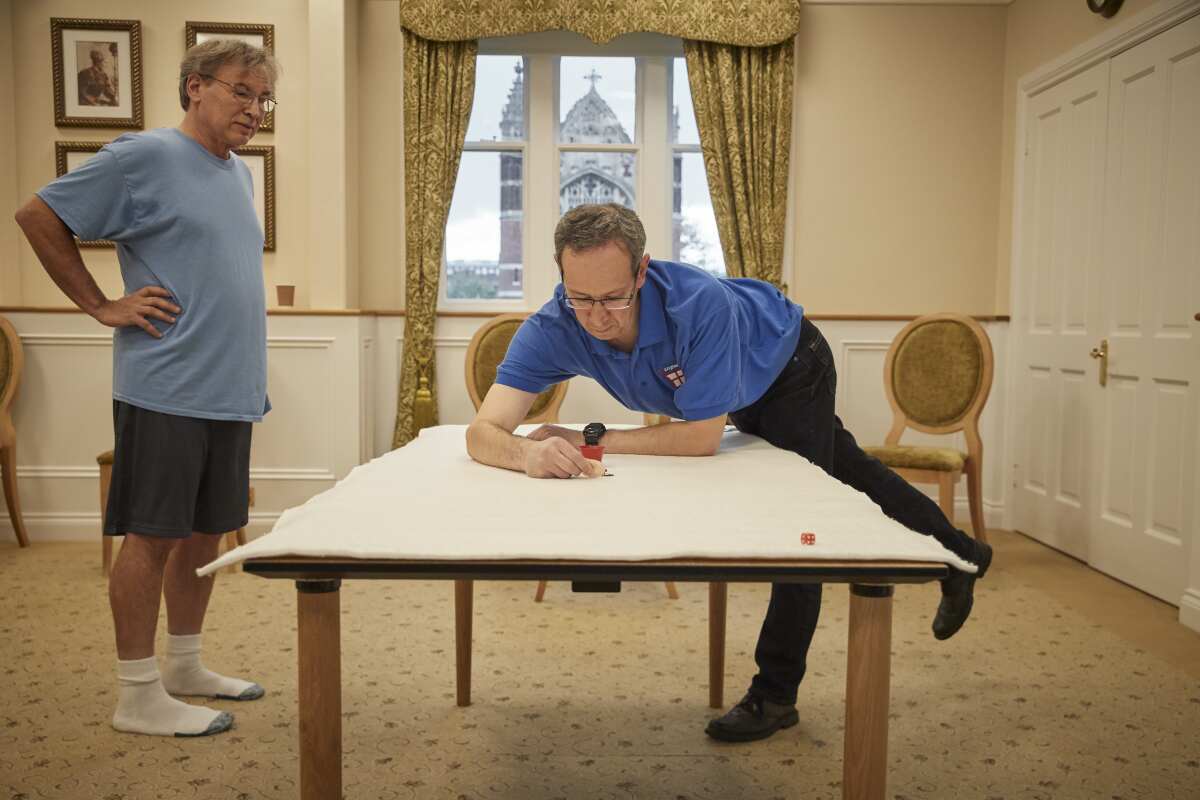
Standing in his way of another world singles title was defending champion Patrick Barrie. They are the Rafael Nadal and Novak Djokovic of their game, and over the last 24 years the two have met 16 times in world finals. Kahn has won 11 of those bouts.
Although the game dates to Victorian times, the competition version Kahn plays was born in Christ’s College at Cambridge University in 1954, when student Bill Steen was looking for a way to represent the university in a sport. Cambridge has had a tiddlywinks club ever since.
Barrie is a 54-year-old senior lecturer in chemical engineering at Cambridge. Kahn earned the right to challenge Barrie having won his 30th U.S. title.
These championships do not unfold before cheering crowds. When Kahn and Barrie and their partners faced off for the world doubles crown in July, they played in Kahn’s basement.
On this fall Thursday, they would square off in a room Barrie had reserved at Cambridge. They would commence play after Barrie had finished giving a lecture on deviations from the ideal gas law.
Kahn had been talkative in the morning leading up to the game. By the time he’d walked up the stone staircase to the match room, his chatter had dried up. With his trousers off and his game face on, it was time for business.
He approved of the sturdy table set up in the middle of the room, running his palm over the mat laid over it. It was industrial felt, not orthopedic felt as he was used to. A tad fluffy for his taste.
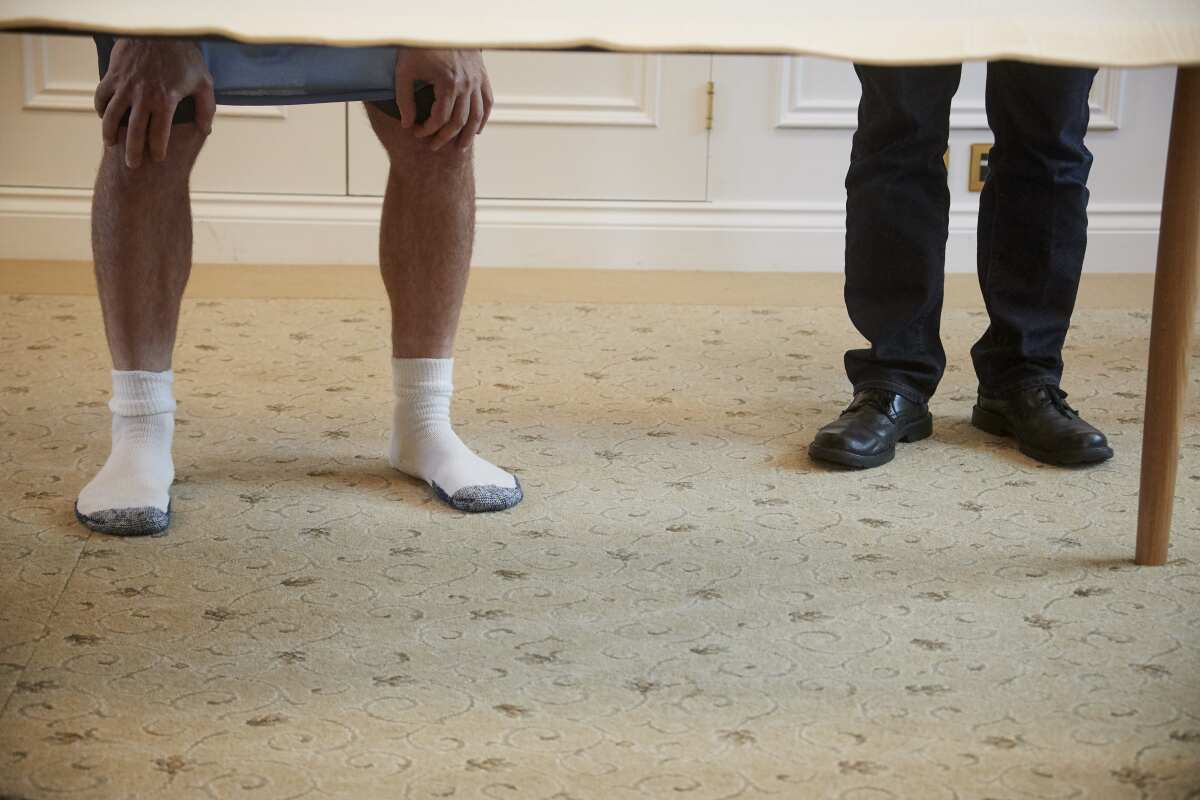
Still, Kahn decided to make do and began acclimatizing himself with the table by sending a succession of winks hurtling toward the plastic red cup. Barrie blew his nose on a white handkerchief, as Harley Jones, who would officiate, emailed the members of the English Tiddlywinks Assn. to encourage them to come and watch.
In the following five hours of play, nobody did.
“It’s not really a spectator sport,” said Barrie, with a wink.
There’s no money in it either.
Earlier this year, the ETwA (as it likes to be known) met in a back room of the Red Bull pub in Cambridge to discuss whether to introduce prize money into competitions. The unanimous verdict: no. Tournaments are tense enough as it is.
Winks, as Kahn prefers to call it, combines strategy and manual dexterity. Players use plastic discs called squidgers to shoot smaller discs, the winks, into a pot the size of a shot glass. They press the squidger along the side of a wink and the resulting release of tension sends the wink flying.
Successfully shooting into the pot wins three tiddlies. Not that the game is that straightforward. For those playing, it really helps to be good at math too.
Players begin games with a shot from the corners of a 6-foot-long table. With the pot located in the center, it’s too far to pot a wink directly. So players jostle for position, luring one another into their territory in an attempt to land a wink on their opponents. This is called squopping.
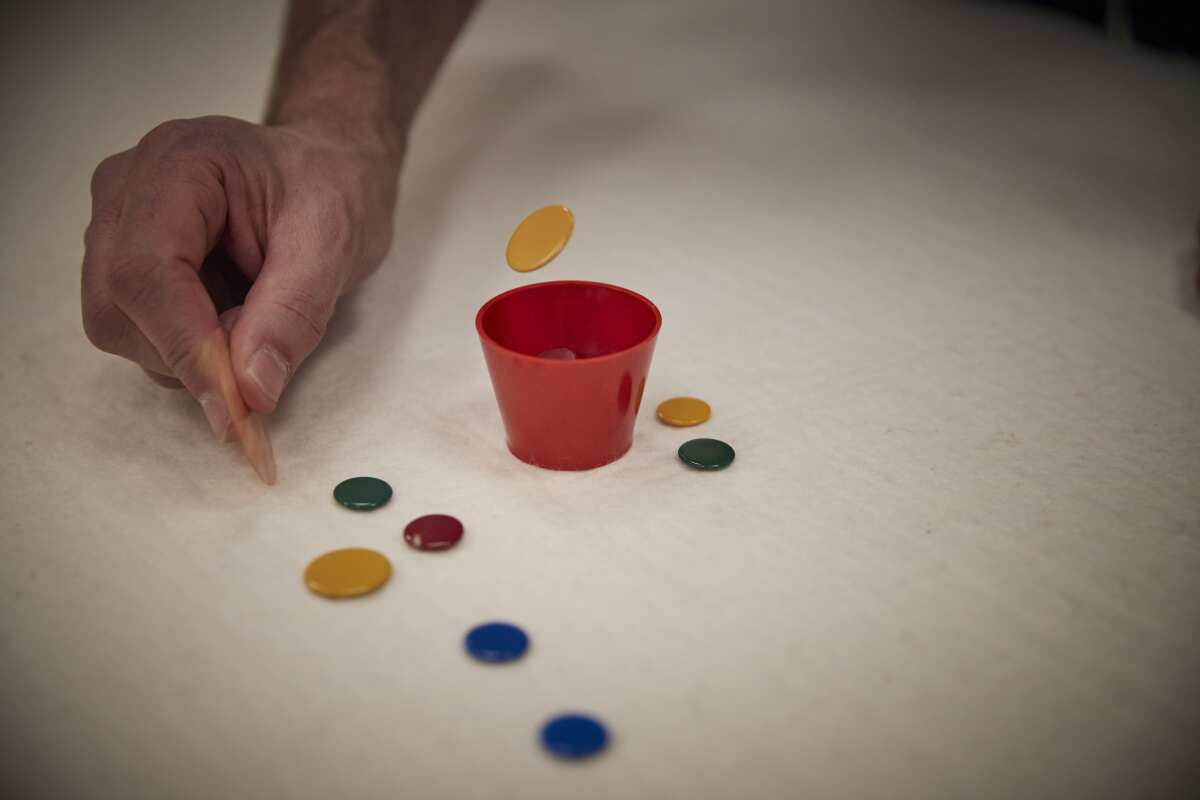
At the end of the game, each uncovered wink gets a tiddly. Winks come in yellow, green, red and blue, and the color with the greatest number of tiddlies gets four match points. The color with the second gets two and the third one. If any colors are tied, the points are shared.
You can win more overall games than your opponent and still lose the match. This is because the points from each game carry over. The winner is the first to a minimum of 24½ points.
When pushed, Kahn admits it would be nice to earn some money from some tournaments — even if only a few hundred bucks. Not that money drives him. He was never a slave to work. Besides, winks isn’t just a game to him; it has forged a lifetime of friendships.
Before they began, Kahn asked Barrie his favorite wink color.
“I wouldn’t tell an enemy,” Barrie said, laughing.
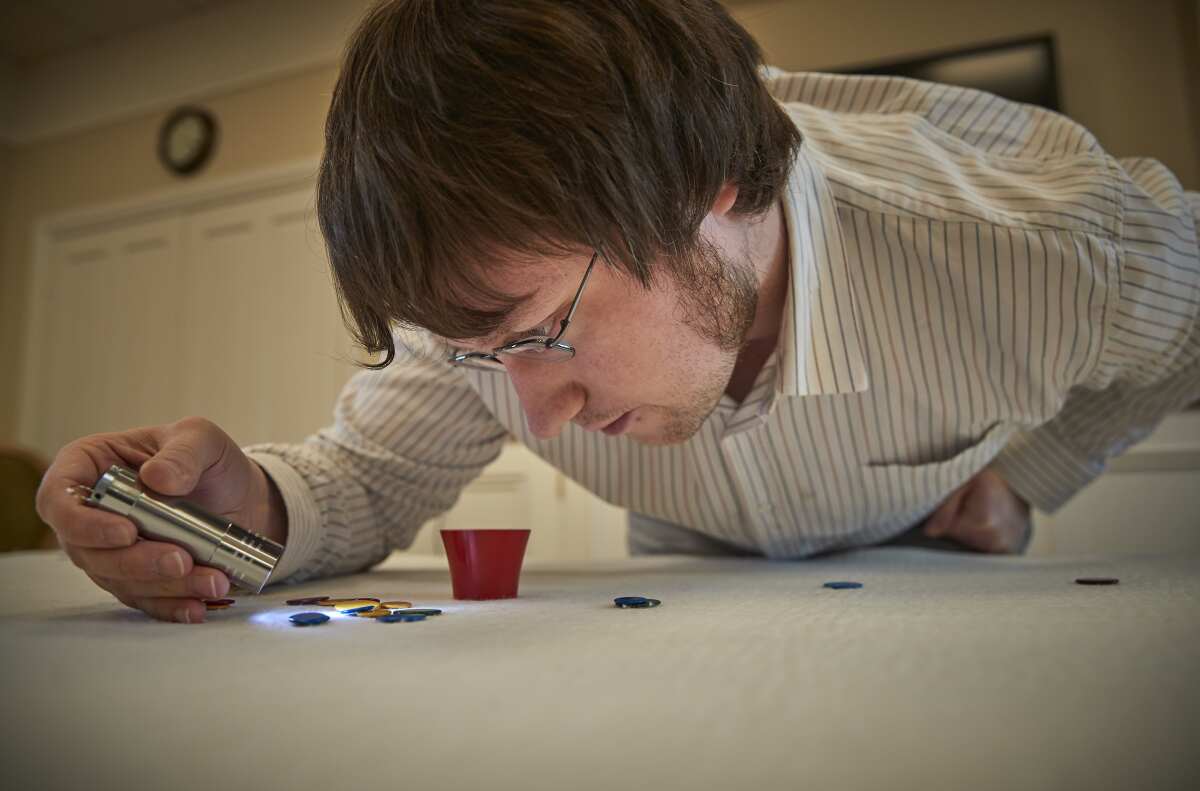
With that, they squidged off. Whoever’s wink landed nearest the cup got to shoot first. Kahn got the start.
Kahn has 16 squidgers, all handmade and varying in size and thickness. Some of their edges are blunt, some sharp, allowing for shots of differing height and distance.
Jones observed while munching on a brie salad sandwich.
When shooting, Kahn leaned over the table as if about to set off for the 100-yard dash. When Barrie was at the table, he maintained a poker face.
Barrie was the more animated of the two. A mischievous smile was never far from his lips.
Kahn took the first game, 4 points to 3. It lasted 55 minutes. “I hope all the games don’t last that long,” he said. By the end of the fourth game, Kahn was up 17-11. His winks had been darting across the mat like circus fleas getting performance-related pay.

“You’re making my life hard,” Barrie said.
“I’d rather it became impossibly hard,” replied Kahn.
When they eventually took a break, Kahn snacked on a bag of mixed nuts. Is he as good now as he’s ever been? “Maybe not quite as good,” he said. “But pretty close.”
Five years ago he needed cataract surgery. It crept up on him until one day he noticed he was missing more shots than usual. The operation helped, but during play he continually switched between tortoiseshell and metal-framed specs.
Though eyesight had been a challenge for Kahn, the game is facing a bigger obstacle. Fewer people are playing it. Five years ago, Cambridge University’s membership dropped to four players. Today they are back up to 16.
It’s worse in the U.S. The game thrived at Cornell University and MIT in the 1970s. Not anymore. Two students, Greg Durrett and Yan Wang, tried to breathe new life into the game stateside in 2006, founding the MIT Tiddlywinks Assn. But they never got more than five visitors to their sessions.
The health of the game was revealed in the winks themselves. Two were removed from the table because they were scratched. Most of Cambridge’s were bought in the 1980s. The Italian manufacturer who supplies them has since gone bust.
When play resumed, Kahn rubbed out the occasional imaginary cigarette on the carpet with his white-socked right foot. Barrie paced the room like a caged animal.
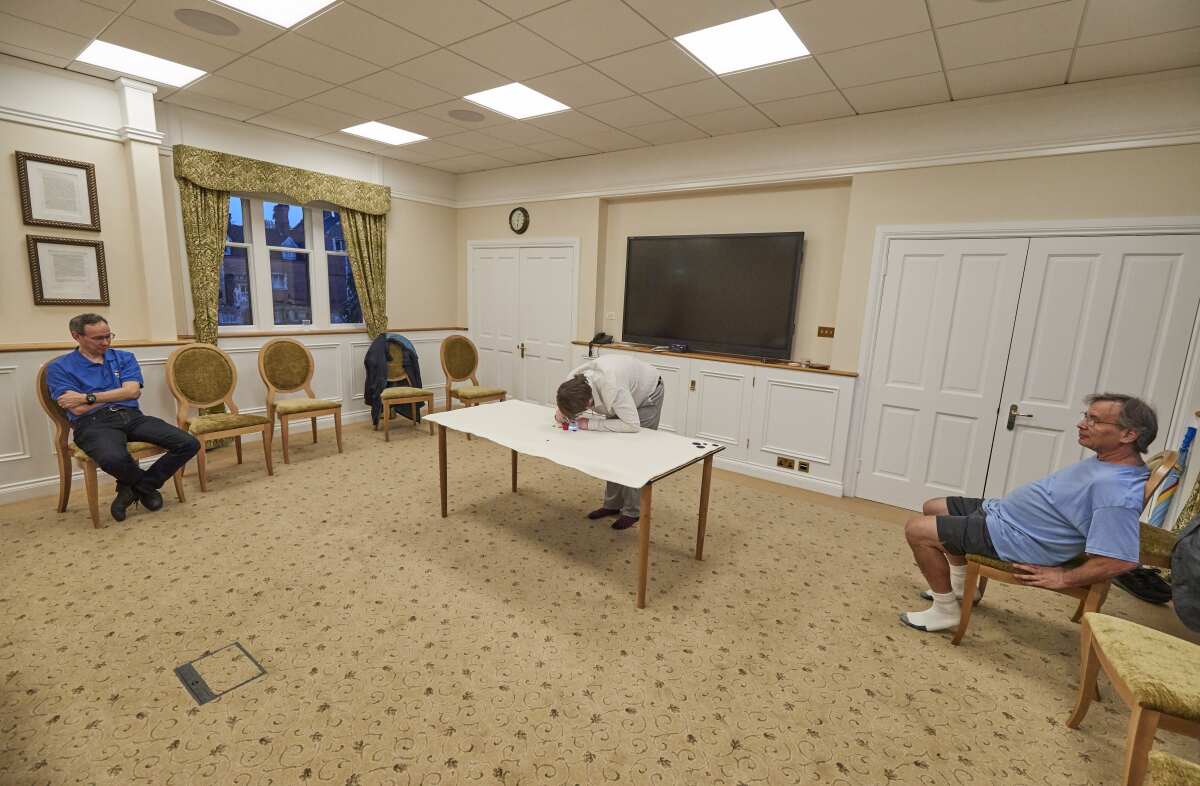
At the table, Barrie’s facial expressions were an event in themselves. In preparation for each shot, he would gently tap his squidger onto the wink twice in time with his eyebrows dancing up and down his forehead.
Now and then Jones, as referee, had to make a ruling. On several occasions the naked eye struggled to deem if a wink had been squopped or not. Jones bent down and shined his flashlight onto the spheres like an optician performing a checkup.
The only sound to be heard now was the hum of the strip lighting.
“It’s touching,” Jones ruled.
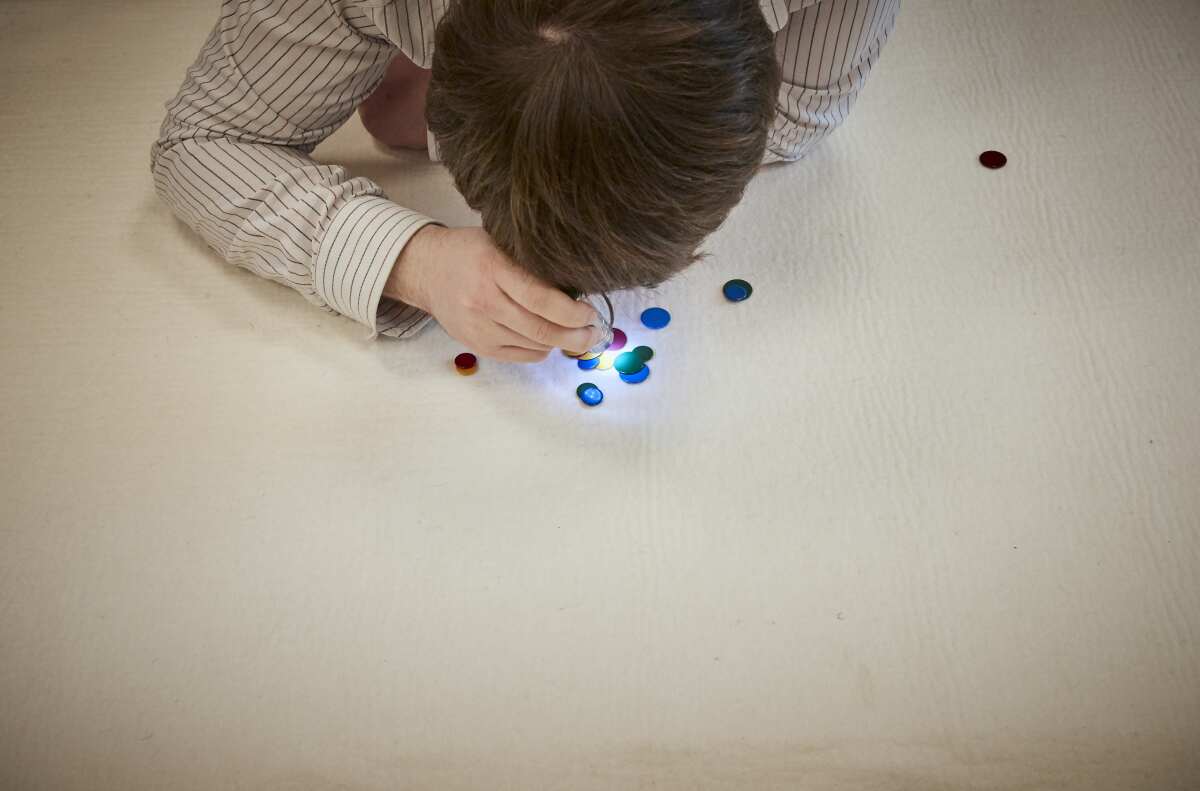
Barrie had squopped Kahn by a millimeter.
In the fifth game Kahn went from 17-11 up to 18-17 down.
“I’m losing it,” whispered Kahn, followed by a gentle “darn it” as a shot fell short.
Barrie now had an added sheen of confidence.
“Oh, that’s juicy!” he squealed as he successfully performed a sequence of more ambitious shots. One, known as the John Lennon Memorial shot because it reflects Lennon’s genius, simultaneously freed a wink while landing on an opponent’s.

Kahn patrolled the table perimeter, weighing up his options. “What does yellow do?” He asked. He couldn’t find the answer. Barrie won the points he needed to ensure a 25-24 victory. They shook hands over the table and smiled.
Kahn remained stoic in defeat.
“I don’t feel too horrible,” he said. “I always want to kick my opponent’s ass around the court, but when the game’s done, it’s done.”
He returned his squidgers into an empty sour candy tin, pulled on his pants and headed out into the night.
Kahn plays an isolated game. His life, however, is not. There are always so many other interests to pursue, life to be lived. Retirement had brought the freedom to explore that further.
But the lure of the felt is hard to resist. Two days later, he and a partner won the English national pairs tournament. As long as he remains competitive, he will continue to play, his hand on a custom-made squidger.
Sanderson is a special correspondent.
More to Read
Start your day right
Sign up for Essential California for news, features and recommendations from the L.A. Times and beyond in your inbox six days a week.
You may occasionally receive promotional content from the Los Angeles Times.

